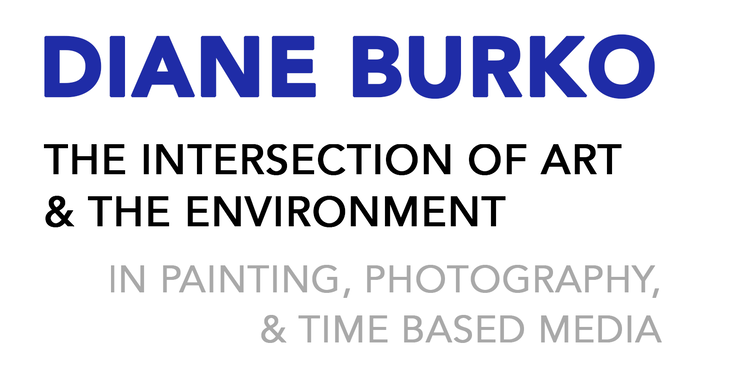This interview originally appeared on the Students on Ice Blog
Every year SOI attracts curious students and world-class educators from around the world to help bring the Polar Regions to life during transformational expeditions. More recently, we’ve begun to highlight these incredible teachers on our blog. With the Antarctic 2014 expedition website live, and the countdown until the expedition on, we’ve launched the first in a series of Q&As to highlight the incredible educators who make these expeditions possible.
Diane Burko is an award winning landscape painter, and more recently she’s gained recognition for her photography. Although she’s been to both Poles on previous expeditions, this will be her first Students on Ice expedition.
How did you first learn about Students on Ice?
I learned about SOI from the photographer David Freese who was part of the Educational Team in 2013 to the Arctic. A mutual photographer friend put us together – and coincidentally he was scheduled to be part of an artist residency to Svalbard in the Arctic Circle which I had already done the year before. David suggested that I would be a valuable addition to SOI.
What sparked your interest in the Polar Regions?
As a landscape painter and photographer it was the logical next step when in 2006 I began to seriously study Climate Change sparked by Gore’s Film, Inconvenient Truth and Elizabeth Kolbert’s Notes on a Catastrophe. My practice relocated to the intersection of Art and Science. And in some sense I see myself now as both a landscape activist and artist.
To you, what makes Antarctica special?
There is an otherworldly majesty to this remote end of the world that can only be experienced by being there. The shades or grey, blue, black and white are infinite in depth and surprise. The light is spectacular. There is a monumentality that commands awe, reverence and a sense of urgency…
I am eager to return to this magical place being aware of new scientific research on the melting of the outlet Thwaites Glacier that is connected to the West Antarctic Ice Sheet. It’s the size of Florida and up to 4,000 meters thick and considered a key question mark in making projections of global sea level rise. I think over 90% of all the ice in the world is in Antarctica – meaning that over 90% of all the fresh water on earth is there.
Do you have any memories of your previous trip that stick with you?
Landing on Elephant Island at Point Pointe Wild where Shackleton had left his men stands out in my mind in terms of the history of exploration. Visually I remember vividly shooting monumental icebergs from a Zodiac one late afternoon with the light exquisitely performing for me…. as well as climbing up onto the continent and shooting back to the sea.
Tell me a bit about your background as an artist?
As mentioned my subject throughout my long career has been the landscape. I have always been “science curious”- I love to understand how and why things happen – particularly when it comes to the earth. I’ve realized in retrospect that most of the monumental environments I’ve sought throughout my career are dramatically impacted by some geological phenomena – like the Grand Canyon, Volcanoes and now glaciers.
However, The stark difference with my current Polar Investigations project is that glaciers like those in Glacier National are not naturally receding like they have for thousands of years. Now that accelerated melt has reduced the 150 glaciers counted in 1850 to barely 25!
What excites you the most about the Students on Ice education program?
I think it is an absolutely priceless opportunity for this generation to become the leadership to
hopefully steward out planet back to health.
What do you hope share with the students?
Having been a college professor for almost 30 years, I enjoy the give and take exchange with students. I continue to learn from them and hopefully some of my knowledge and insights can be helpful as they experience Antarctica. I think I can provide an aesthetic point of view an alternative way of interpreting what they are experiencing through visual imagery. I also hope to share some of the knowledge I’ve gained over the years collaborating with glaciologists.
Do you think it’s important for scientists and artists to work together? And what are some of the ways this can come about?
I know scientists definitely appreciate an artistic interpretation of their data. They value our ability to communicate to the general public through compelling images. I’ve participated on numerous panels at the AGU (American Geological Union) as well as the GSA) Geological; Society of America) to discuss how Art can Communicate Science. Just recently I was at CU Boulder meeting with a large group of of researchers.
Do you have any advice for budding artists?
Follow your passion- only make at if you cant stop yourself- it’s not an easy profession. Have a day job.
